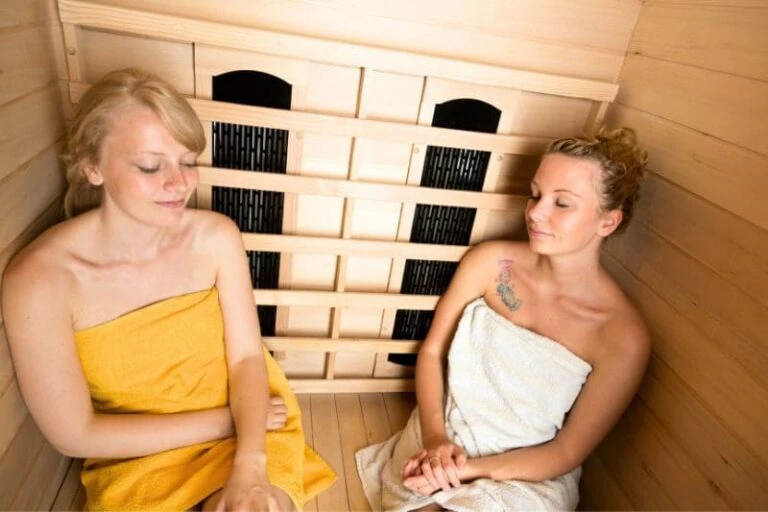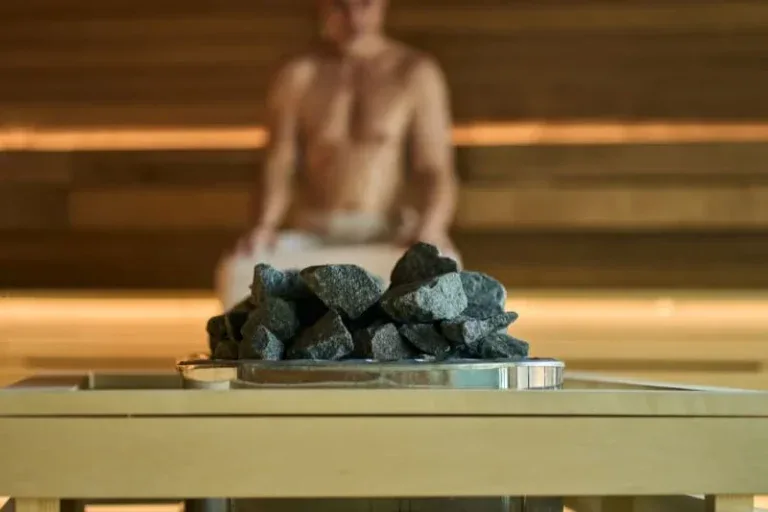Indoor Vs Outdoor Sauna: Which One Is Right For You in 2025?

Deciding between an indoor vs outdoor sauna? This guide helps you choose the perfect home wellness sanctuary, with costs ranging from $3,000 to $50,600.
Modern home saunas deliver remarkable health benefits while adding significant property value—yet location choice shapes every aspect of your experience. From energy consumption differences of 1.5-3 kW per session to ongoing maintenance needs, your choice affects both daily enjoyment and long-term value.
Whether you’re a first-time buyer or looking to upgrade your existing setup, understanding these key differences will save you time and money.
The rising popularity of home wellness amenities makes sauna selection crucial. Smart technology integration and traditional Finnish sauna features now combine in both settings, offering customized wellness experiences.
Key Takeaways
- Property Considerations:
- Indoor saunas need 6×6 feet minimum with 15-30A electrical capacity
- Outdoor installations require 8×8 feet plus foundation support
- Both types increase home value by 30-50%
- Cost Analysis:
- Basic installations: $3,000-$9,000
- Premium designs: $10,000-$50,600
- Monthly operation: $25-$50
- Maintenance: $300-600 annually
- Performance Factors:
- Indoor units heat in 10-30 minutes
- Outdoor models need 20-40 minutes
- Indoor energy use: 1.5-3 kW per session
- Outdoor consumption: 3-6 kW per session
Table of Contents
Indoor vs Outdoor Sauna: Quick Comparison
Comparing essential factors helps match the right sauna to your needs:
| Feature | Indoor Sauna | Outdoor Sauna |
|---|---|---|
| Base Cost | $3,000-$9,000 | $3,000-$6,000 |
| Luxury Models | Up to $10,000 | Up to $50,600 |
| Energy Use | 1.5-3 kW per session | 3-6 kW per session |
| Heat-up Time | 10-15 min (infrared), 20-30 min (traditional) | 20-40 min (weather dependent) |
| Space Needed | 6×6 feet minimum | 8×8 feet minimum |
| Installation | $300-$1,500 (prefab) | $1,500-$2,500 (precut) |
| Monthly Costs | $25-$50 | $25-$50 |
| Energy Impact Efficiency | 1.5-3 kW, lower carbon footprint | 3-6 kW, weather-dependent |
| Safety Systems | Standard home integration | Advanced weather protection needed |
| Environmental Integration | Lower material usage | Higher material requirements, natural |
Check out my comprehensive guide explaining the basics of saunas.
Indoor vs Outdoor Sauna: Essential Factors to Consider
1. Space & Location Requirements
Placing a sauna demands careful consideration of available space and local regulations.
Indoor Location Options:
- Basement saunas maximize unused space with year-round access
- Master bathroom saunas create convenient spa experiences
- Home gym integrations support fitness routines
- Spare room conversions offer private wellness spaces
Outdoor Location Choices:
- Backyard settings provide natural surroundings
- Poolside placement enhances swim-spa experiences
- Garden integration creates scenic wellness spots
- Lakeside locations maximize views and atmosphere
Building regulations shape both installation types. Indoor saunas require:
- Minimum 6×6 feet area
- Dedicated electrical circuits (15-30A)
- Proper ventilation systems ($250-$600)
- Moisture-resistant flooring
- Adequate ceiling height clearance
Outdoor installations face different demands. A backyard sauna needs:
- Minimum 8×8 feet area
- Solid foundation ($500-$1,000)
- Weather-resistant materials
- Proper drainage systems
- Local permit compliance
Related: Build Your Own Sauna
2. Installation & Design
Modern sauna technology transforms both indoor and outdoor installations into sophisticated wellness spaces. Indoor options favor space-efficient designs with smart integration features. Built-in saunas blend seamlessly with home architecture, while prefabricated kits offer quick installation.
Current technology trends include:
- Smart temperature controls via mobile apps
- Automated humidity monitoring
- Bluetooth audio integration
- LED mood lighting systems
- Remote heating activation
Related: Sauna Lighting and Decor Ideas
Outdoor designs embrace nature while incorporating advanced features. Popular styles include:
1. Barrel saunas: Round design promotes efficient heat circulation, requiring less energy for optimal performance.
Explore our guides on the top barrel saunas worth buying or building your own DIY barrel sauna.

2. Pod and raindrop-shaped models: Modern aesthetics meet functional design, featuring panoramic windows for natural views.
3. Cabin-style units: Traditional appeal with contemporary amenities, often including tiered seating and cooling areas.
Modern safety features integrate seamlessly into both designs. Indoor units include emergency shut-off systems and heat-resistant barriers. Outdoor installations feature weather-resistant materials and advanced moisture protection.
Both types now incorporate eco-friendly materials, with sustainable wood sourcing and energy-efficient insulation becoming standard practice.
3. Cost Considerations
The financial impact of a sauna installation extends beyond purchase prices. Understanding these costs helps plan a sustainable investment. Installation costs vary significantly based on location and design complexity. Market analysis shows indoor saunas typically need less initial construction investment but may require home modifications.
Initial Investment Breakdown:
- Basic indoor units: $1,900-$9,000
- Premium indoor models: $10,000+
- Standard outdoor units: $3,990-$20,000
- Luxury outdoor designs: Up to $50,600
Running costs reflect energy efficiency ratings and usage patterns:
Indoor Saunas:
- Monthly electricity cost: $25-35 (controlled environment)
- Annual maintenance: $300-400 (protected from elements)
- Insurance adjustment: 5-7% premium increase
Outdoor Saunas:
- Monthly electricity cost: $35-50 (weather dependent)
- Annual maintenance: $400-600 (weather exposure)
- Insurance adjustment: 7-10% premium increase
Property Value Impact:
- Indoor sauna: 30-35% return on investment
- Outdoor sauna: 35-50% return on investment (higher for luxury models)
To gain an in-depth insight on sauna costs, please read my article on how much does a home sauna cost.
If you’re deciding between an indoor and outdoor sauna, our review of the Dundalk CT Georgian Cabin Sauna highlights why this outdoor model stands out.

4. Maintenance & Longevity
Proper maintenance determines a sauna’s lifespan and performance.
Indoor Maintenance Schedule:
- Weekly cleaning of surfaces
- Monthly heater inspections
- Quarterly ventilation checks
- Annual electrical system review
Outdoor units face environmental challenges requiring structured care:
- Spring/Summer Tasks: Deep cleaning of all surfaces, wood treatment applications, ventilation system inspection, seal verification
- Fall/Winter Tasks: Weather barrier checks, heating system calibration, moisture control measures, structural inspection for weather damage
Energy consumption data shows significant variations:
- Indoor infrared models: 1.5-3 kW per session
- Traditional indoor units: 3-4.5 kW per session
- Outdoor saunas: 3-6 kW per session, varying with climate
Related: How to Stain a Sauna
5. Health and Wellness Benefits
Indoor saunas provide controlled environments for consistent therapy, enhanced sleep quality, and year-round accessibility. Private wellness routines benefit from precise temperature control and convenient access.
Outdoor saunas offer unique advantages through natural stress reduction, fresh air benefits, and temperature variation therapy. The natural setting enhances relaxation, while larger spaces support group wellness activities.
6. Environmental Impact and Efficiency
Indoor installations benefit from lower energy loss and controlled efficiency. They integrate with existing home systems and require fewer materials for construction.
Outdoor units excel in natural ventilation and solar integration potential. Both types support eco-friendly material choices and offer 15-20 years of longevity with proper maintenance. Modern sauna designs incorporate renewable energy options and sustainable materials.
7. Lifestyle and Usage Patterns
Indoor saunas suit daily wellness routines with convenience, privacy, and quick access. They create intimate settings for personal relaxation and controlled therapeutic sessions.
Outdoor models excel in social settings, offering flexible usage patterns and entertainment possibilities. Their natural integration and larger spaces make them ideal for family gatherings and social wellness activities.
8. Long-term Value and Adaptability
Well-maintained saunas last 15-20 years, with indoor units often exceeding this range due to controlled environments.
Indoor units excel in energy efficiency and controlled costs. Outdoor saunas offer solar integration possibilities. Both support future technology upgrades and feature additions.
Investment returns include property value increases, wellness amenity appeal, and energy efficiency savings. Both types support future upgrades including:
- Technology integration
- Feature expansions
- Energy system improvements
- Smart control additions
For a detailed look at indoor models, check out my roundup of the best indoor saunas for 2025.
Related Article: What All You Need to Consider Before Buying a Sauna
Indoor Saunas: Complete Analysis
Advantages
The climate-controlled environment of an indoor sauna creates consistent therapeutic conditions, while convenience encourages regular usage patterns.

Health Benefits:
- Cardiovascular improvements through regulated heat exposure
- Enhanced sleep quality
- Reduced stress levels through consistent access
- Muscle recovery acceleration in controlled temperatures
Environmental Benefits:
- Lower carbon footprint due to a controlled environment
- Reduced heat loss in climate-controlled space
- Integration with the home’s existing energy systems
- Lower material requirements for construction
Convenience Factors:
Private access supports flexible scheduling, while climate protection ensures year-round availability. Smart technology integration enables preheating through mobile apps, optimizing energy use and preparation time.
Safety Features:
- Integrated emergency shut-off systems
- Heat-resistant barriers
- Automated temperature control
- Quick access to home safety systems
Modern features enhance the experience:
- Automated temperature control
- Humidity monitoring systems
- Air quality management
- Integrated sound systems
- Chromotherapy lighting options
Looking for that perfect indoor sauna which meets all your requi
Disadvantages
Space limitations present primary challenges for indoor installations. Technical considerations include:
Ventilation Requirements:
- Dedicated air exchange systems
- Moisture control measures
- Heat distribution management
- Indoor air quality monitoring
Construction Challenges:
- Load-bearing capacity verification
- Electrical system upgrades
- Moisture barrier installation
- Proper insulation requirements
Related: DIY Indoor Sauna
Outdoor Saunas: Complete Analysis
Advantages
Natural settings of outdoor saunas amplify both physical and psychological wellness effects.

Health Benefits: Outdoor sauna users experience:
- Enhanced stress reduction through nature exposure
- Improved sleep quality from fresh air combination
- Increased cardiovascular benefits from temperature variations
- Better mental wellness from natural light exposure
Natural Integration: Outdoor saunas create distinctive wellness spaces through:
- Panoramic windows capturing garden views
- Fresh air ventilation systems
- Natural wood construction blending with surroundings
- Flexible placement options near pools or gardens
Environmental Integration:
- Natural ventilation reducing energy needs
- Solar heating possibilities
- Sustainable material usage
- Lower impact on home’s existing systems
Enhanced Safety Design:
- Weather-resistant construction
- Advanced moisture protection
- Natural cooling options
- Emergency access features
Design possibilities expand with outdoor settings:
- Barrel shapes for efficient heating
- Glass-front designs maximizing views
- Pod-style units adding modern appeal
- Traditional cabin designs offering authenticity
Related:
Best Outdoor Saunas
DIY Outdoor Sauna
Disadvantages
Weather poses unique challenges for outdoor installations.
Climate Impact:
- Extended heating times in cold weather
- Higher energy consumption during winter
- Increased wear from weather exposure
- Seasonal accessibility challenges
Construction needs include:
- Weather-resistant materials
- Enhanced insulation systems
- Proper drainage installation
- Secure foundation requirements

Indoor vs Outdoor Sauna: Environmental Impact & Sustainability
Carbon footprint analysis reveals significant differences between indoor and outdoor installations. Indoor saunas typically consume 1.5-3 kW per session, while outdoor units need 3-6 kW, varying with climate conditions.
Key Environmental Factors:
Energy Efficiency:
- Indoor units: More consistent energy use
- Outdoor units: Weather-dependent consumption
- Infrared options: 40% more efficient than traditional
Material Sustainability:
- Western red cedar: Naturally resistant, sustainable
- Composite materials: Recycled content options
- Insulation: New eco-friendly alternatives
- Glass components: Energy-efficient thermal barriers
Long-term Environmental Considerations:
- Indoor units last 15-20 years with proper maintenance
- Outdoor units need more material replacement
- Both types support energy-efficient upgrades
- Integration with renewable energy sources possible
Indoor vs Outdoor Sauna: Safety & Risk Management
Recent safety data shows both sauna types maintain excellent safety records when properly installed. Indoor units report incidents in less than 0.1% of installations, while outdoor units face primarily weather-related challenges.
Essential safety features include temperature limiters, emergency shut-offs, and proper ventilation controls. Indoor saunas require regular electrical inspections and air quality monitoring. Outdoor installations need weather protection systems and secure foundations.
Insurance providers typically increase premiums by only 5-10% for well-maintained units with proper safety certifications.
Conclusion
Choosing between indoor and outdoor saunas demands balancing practical needs with wellness goals.
Indoor installations excel in convenience and year-round access, perfect for daily therapeutic use. Outdoor units create striking wellness spaces with natural integration, ideal for social and family settings.
Next steps for sauna installation:
- Measure available space
- Check local building regulations
- Compare energy costs
- Review warranty options
- Select certified installers
Future upgrades remain possible with both types. Smart technology integration, renewable energy systems, and enhanced wellness features can improve any installation as needs change.
Ready to find your perfect home sauna and level up your wellness game? Check out our comprehensive guide to the best home saunas.
FAQs about Indoor vs Outdoor Sauna
Is it good to be in a sauna every day?
Daily sauna sessions lasting 15-20 minutes can boost your health and wellness. The key is starting slowly with 2-3 sessions per week, staying hydrated, and building up your tolerance. Most regular sauna users report better sleep, less stress, and improved recovery when using saunas daily.
What type of sauna is best for detox?
Traditional Finnish saunas create the best environment for detox through sweating. Their high heat (180-200°F) makes you sweat more than other sauna types. Your body releases toxins more effectively in these hot, dry conditions compared to lower-temperature options.
What type of sauna is healthiest?
Infrared saunas offer the gentlest health benefits since they run at lower temperatures (120-140°F). The heat goes deeper into your muscles and joints without putting stress on your heart. Most people find infrared saunas easier to use regularly, especially those new to sauna bathing.
Do doctors recommend saunas?
More doctors now suggest sauna use for better heart health, pain relief, and stress reduction. Research shows that regular sauna sessions can lower blood pressure and boost circulation. Just check with your doctor first, especially if you have heart issues or are pregnant.

“Become a Sauna Expert Overnight!”
Grab Your “FREE” Sauna E-book NOW!
Get your hands on the ultimate sauna manual. From history to DIY setups, our free guide has it all.

As a Chartered Accountant turned sauna enthusiast, I bring a unique blend of analytical skills and hands-on experience to the world of heat therapy. With over a decade dedicated to researching and testing sauna products and practices, I’ve developed a deep understanding of this field. A the founder of HomeInDepth.com, I provide reliable, easy-to-understand information on all aspects of saunas. My goal is to guide you through every step of your sauna journey, offering meticulously researched, unbiased advice to help you make informed decisions and create your perfect sauna experience. I’m always happy to hear from sauna lovers like you—feel free to leave questions or share your own tips in the comments below so we can learn together. Contact me on:







4 Comments